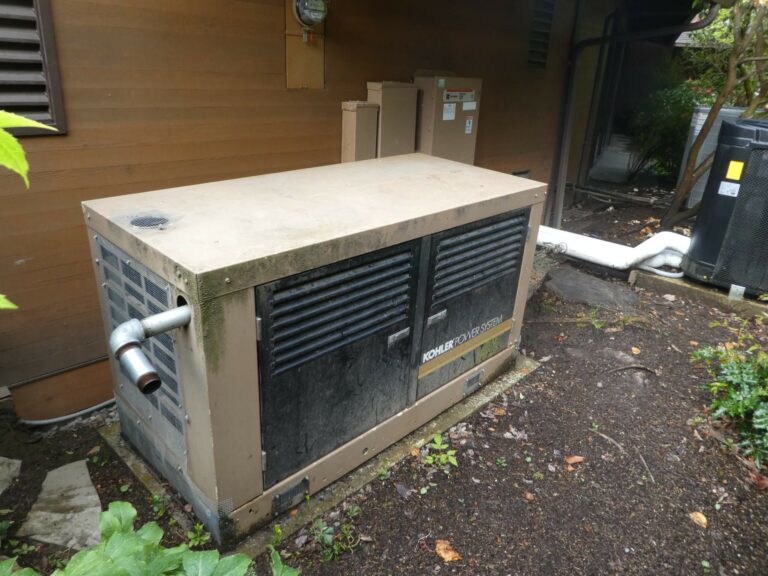Mini-Split Ductless Heat Pump Systems

Currently, mini-split systems have found favor in new homes that want to present a high-efficiency, low energy footprint while supplying heat and cooling in a manner that allows individual control of numerous interior areas. Ductless, mini-split-system heat pumps also make an excellent retrofit in houses with “non-ducted” heating systems, such as all-electric heated houses – think electric baseboard heaters. They can also be an excellent choice for room additions where extending or installing distribution ductwork or piping is not feasible. These systems are relatively easy to install, super energy efficient, and provide total comfort with both heating and cooling modes. It is little wonder that ductless heat pumps are quickly gaining popularity.
Mini-splits Have Two Main Components
Like standard air-source heat pumps, mini splits have two main components; an outdoor compressor/condenser and an indoor air-handling unit. A conduit, which houses the power cable, refrigerant tubing, suction tubing, and a condensate drain, links the outdoor and indoor units.

Ductless Heat Pump Advantages
The main advantages of mini splits are their small size and flexibility for zoning or heating and cooling individual rooms. Some models can have as many as four indoor air-handling units (for four zones or rooms) connected to one outdoor compressor unit. The number depends on how much heating or cooling is required for the building or each zone (which in turn is affected by how well the building is insulated and air sealed). Each of the zones can have its own thermostat, so you only need to condition occupied spaces. This will save energy and money.
Ductless mini-split systems are easier to install than some other types of space conditioning systems. For example, the hook-up between the outdoor and indoor units generally requires only a three-inch hole through a wall for the conduit. Most manufacturers of this type of system can provide a variety of lengths of connecting conduits, and, if necessary, you can locate the outdoor unit as far away as 50 feet from the indoor evaporator. This makes it possible to cool rooms on the front side of a house, but locate the compressor in a more advantageous or inconspicuous place on the outside of the building. Most new compressors for these types of systems are very quiet when compared to the traditional heat pump or AC compressors.
Mini-splits have no ducts, so they avoid the energy losses associated with the ductwork of central forced air systems. Duct losses can account for more than 30% of energy consumption for space conditioning, especially if the ducts are in an unconditioned space such as an attic.
In comparison to other add-on systems, mini-splits offer more interior design flexibility. The indoor air handlers can be suspended from a ceiling, mounted flush into a drop ceiling, or hung on a wall. Floor-standing models are also available. Most indoor units are about seven inches deep and have sleek high tech-looking jackets. Many also offer a remote control to make it easier to turn the system on and off when it’s positioned high on a wall or suspended from a ceiling.
Split systems can help keep your home safer because there is only a small hole in the wall. Through-the-wall and window-mounted room air conditioners can provide easy access for intruders.
Ductless Heat Pump Disadvantages
The cost of installing mini splits can be higher than some systems, although lower operating costs and rebates or other financial incentives, offered in some areas, can help offset the initial expense.
The installer must correctly size each indoor unit and determine the best location for its installation. Oversized or incorrectly located air-handlers can result in short-cycling, which wastes energy and does not provide proper temperature or humidity control. Too large a system is more expensive to buy and operate.
Some people may not like the appearance of the indoor part of the system. While less obtrusive than a window room air conditioner, these units don’t have the built-in look of a central system. There must also be a place to drain condensate water near the outdoor unit.
Ductless Heat Pump Maintenance
Ductless heat pumps are pretty low-maintenance. Like all systems that move air, they do have air filters that’s should be cleaned or changed quarterly. It is not a bad idea to keep the system on an annual service schedule.

Summary
Ductless heat pump systems are here to stay. If you are looking for a convenient energy-efficient solution for your heating and cooling needs, I would consider looking into one of these systems. They are pretty expensive to install but if comfort is what you are after, there are not many more cost-effective ways to achieve full comfort control than a ductless heat pump system.
Below are Links for More Information
Energy.Gov http://energy.gov/energysaver/articles/ductless-mini-split-heat-pumps
Fujitsu http://www.fujitsu-general.com/global/products/multi/lineup/index.html
Mitsubishi http://www.mitsubishicomfort.com/products







